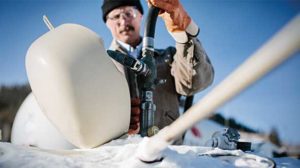Servicing out-of-gas calls
When industry members have direct interface with gas systems, the chance of making mistakes that result in damaging fires and explosions is at its peak. Interruption-of-service or out-of-gas calls are at the top of the list for these risks.

Vigilance in performing leak checks, documenting that work and following company policy to relight appliances keeps customers safe. Photo courtesy of Propane Education & Research Council
We all know there are separate steps the codes require for new gas systems and gas systems that have already had gas introduced but now face a service interruption. Both of these situations require implementation of defined pressure and leak test procedures. A new system requires a pressure test up to the manual shutoff or capped lines with an inert gas. Once approved by the authority having jurisdiction (AHJ), a leak test of the appliance is required. Interruption of service on a used system only requires a leak test.
Failure to document
A common problem with each of these procedures is failure to properly document what was done.
Virtually all marketers have written procedures that require listing the start and end test pressure, time pressure was held, date and time of the test, amount of gas in the tank, etc. But incomplete or inaccurate forms are more common than I would expect. A note “leak check passed” might be written on a delivery ticket. Or worse, there is no written documentation of the leak test, just the word of the service or delivery person that it was done.
Propane marketers need to focus on management review of out-of-gas and interruption-of-service calls to prevent the lack of documentation and poor documentation.
Failure to relight
The code only requires a leak test to confirm there are no leaks in the gas system in the event of an interruption of service.
However, training and company practices often instruct the delivery or service person to enter the home and restart all gas appliances. When this is a company practice, it is imperative to document accurately what appliances are in the home and that each was relit. Electronic ignition, if present, should be confirmed as well.
Is it company practice to restart an electronic ignition appliance? If so, document that it was done.
When a customer calls the plant to let someone know they have an interruption of gas service, that communication needs to be documented in an easily retrievable place: on the customer trip ticket, on the customer account summary screen or on a fill ticket given to the delivery driver.
Failure to leak check
When a call is made to a site for out of gas and the delivery driver notes pressure in the tank but the tank is at zero, a leak test should always be performed.
We see this fact pattern now and again. If there is pressure in the tank, but the gauge reads zero, it’s a hard sell if no leak check was done and an explosion occurs in short order following a fill. Even with pressure from the bleeder valve, it should be company practice to perform a leak check when there’s an out-of-gas call or when the tank gauge reads zero when the driver comes to fill the tank.
A significant number of claims and lawsuits we see follow close in time to an interruption-of-service or out-of-gas call. These claims have at their core a failure to perform leak checks, document that work and follow company policy to light appliances.
Vigilance in these areas will result in fewer incidents.
John V. McCoy is with McCoy, Leavitt, Laskey LLC. His firm represents industry members nationally.
















